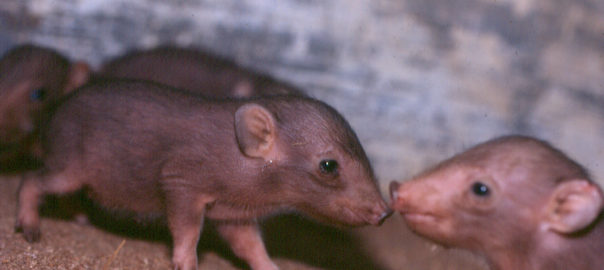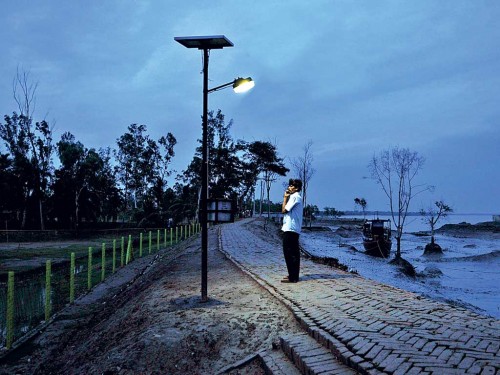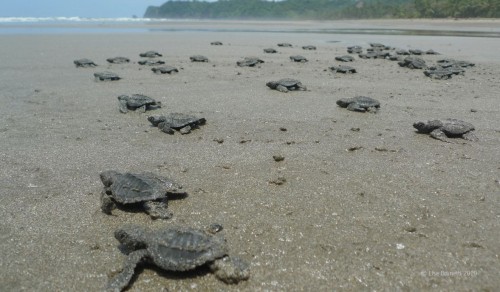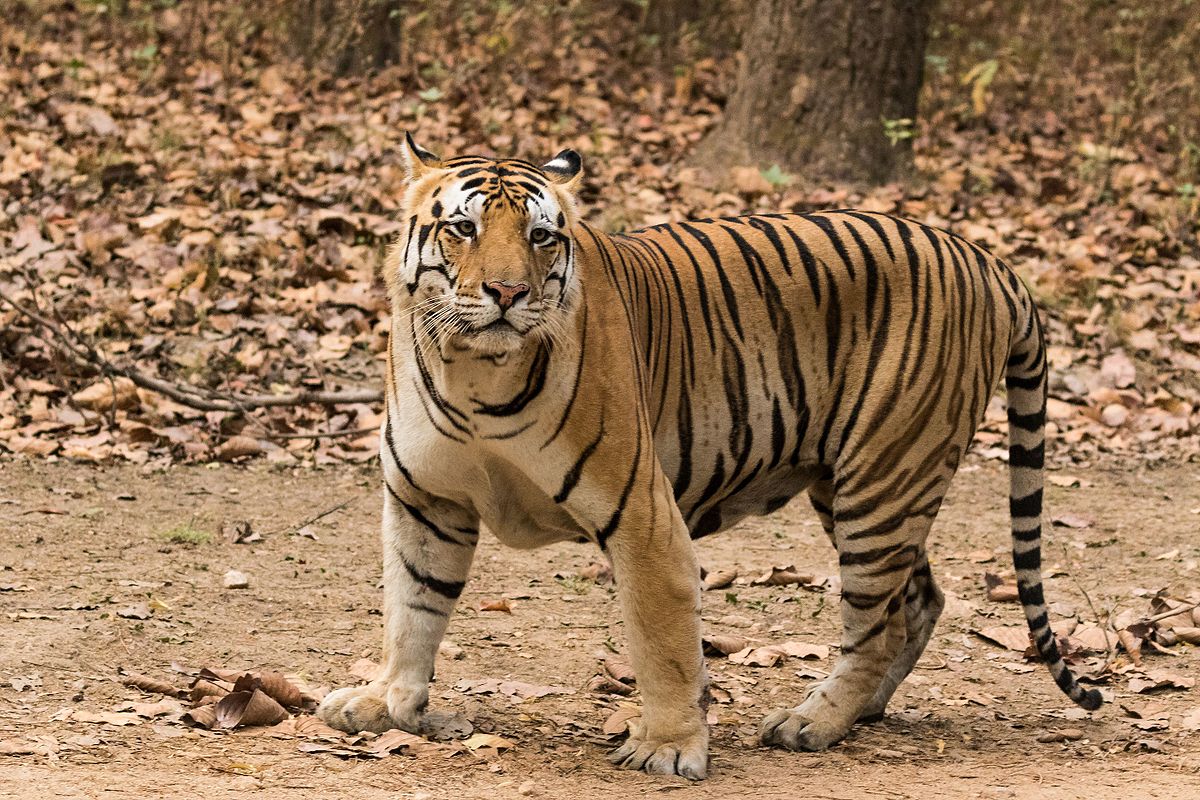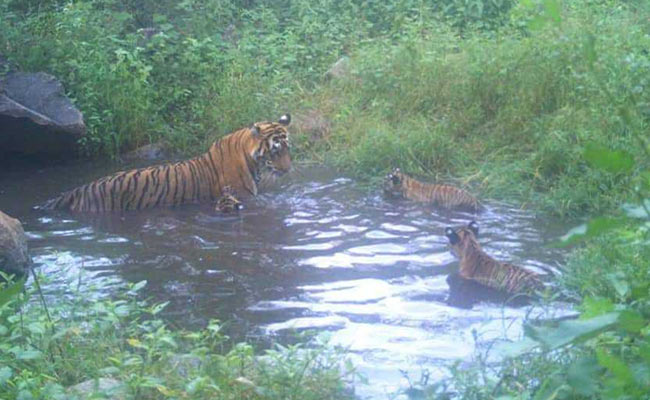It is difficult to imagine that the conservation of an entire ecosystem could be resting on the shoulders of a tiny little animal called the Pygmy Hog. But the more you understand the importance of the species the more you understand how vital its presence is to save grasslands, elephants, and tigers.
Fourteen captive-bred pygmy hogs were released in Manas National Park by the Pygmy Hog Conservation Programme (PHCP) on May 14 and 17, 2020 signaling yet another successful re-wilding effort by the team which has been at it since 1995.
Pygmy hogs are the smallest of wild pigs in the world and also the rarest. They were once found in tall, wet alluvial grasslands extending in the Himalayan foothills from northwestern Uttar Pradesh and southern Nepal to Assam, possibly in southern Bhutan. But agricultural developments eroded the land of the tall grasslands and thus their habitat. The IUCN had listed the species as Critically Endangered in 2008. Since then, thanks to the re-introduction work, the declining trend could be controlled and now the Pygmy hog is marked as Endangered.
Today, the Pygmy Hog is found in just three places in Assam—Manas, Sonai Rupai and Orang.
Also Read: Meet the Pygmy Hog
The timely action
Probably the biggest effort to save the tiny mammal has been taken by the Pygmy Hog Conservation Programme started by Goutam Narayan of EcoSystems-India, with the help of the Assam government, the Durrell Wildlife Conservation Trust (DWCT), and former IUCN Wild Pig Specialist Group chair, the late William Oliver.
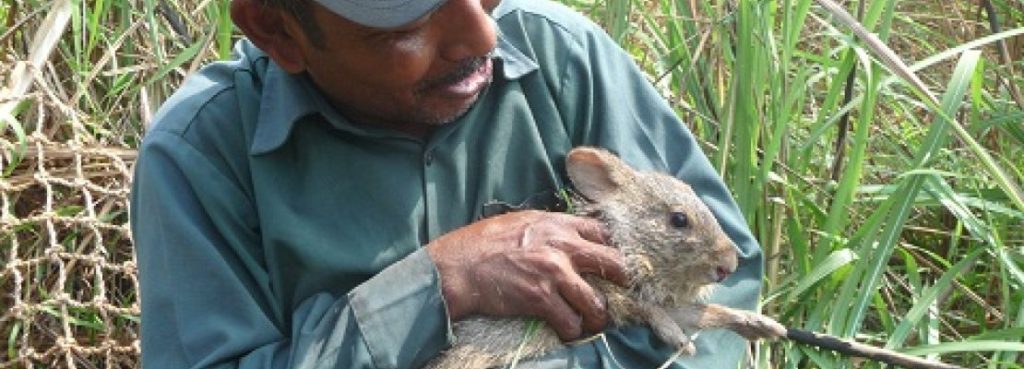
The PHCP team procured six Pygmy Hogs for captive breeding from the original population in Manas in 1995-96. These were kept in Guwahati at the Pygmy Hog Conservation Centre. The rewilding of Pygmy Hogs began in 2008 with the release of 16 captive-bred hogs into the Sonai Rupai Wildlife Sanctuary, Assam.
In time more animals were released in different protected areas in Assam. Unfortunately, the population at Sonai Rupai sanctuary remained 35 – the number of captive-bred released animals – because of the deteriorating grassland habitat of the area.
“The hog,” says wildlife scientist Goutam Narayan, “is an indicator species for the health of tall wet grassland habitat across the southern foothills of the Himalayas. Unfortunately, this landscape has seen the most destruction due to the ever-growing agricultural expansion with human and cattle populations as well as commercial plantations. The hog cannot adapt to the changing habitat.”
“At Orang National Park in contrast to the Sonai Rupai fifty-nine hogs we released between 2011 and 2015 have now doubled—thanks to better park management,” says Narayan.
With the latest release, the number of pygmy hogs reintroduced into the wild by PHCP has reached 130 (62 males, 68 females)
A grassland specialist
In 2014, a survey conducted by the Assam Forest Department in the Manas National Park (MNP) has detected an estimated 21 nests of the pygmy hog in three separate locations. The reason pygmy hogs favour this habitat could be the presence of untampered grassland. Manas contains some of the largest remaining grassland blocks in the sub-Himalayan grassland ecosystems.
What grasslands do mostly, apart from providing fodder to herbivorous animals, is to help protect forest lands from floods and create a reservoir. During monsoons, the grasslands absorb water which then slowly percolates as groundwater and also flows towards the rivers and streams. Without grasslands, threats like soil erosion, flooding increases.
If the pygmy hog population flourishes, grassland habitat is safe and in turn the survival of other species such as the one-horned rhinoceros, tiger, swamp deer, wild buffalo, hispid hare and Bengal florican.
According to grassland experts — Dr. Bibhuti Lahkar from Aaranyak wet alluvial grasslands dominated by Barenga ( Saccharum narenga), Ulu ( Imperata cylindrica) species are critical for the survival of pygmy hog. These grasses must be protected by taking suitable measures such as early mosaic burning and systematic removal of anthropogenic pressure such as grazing domestic animals from nearby villages and the spread of invasive species.
Vital to science
Other than helping protect a vital ecosystem, the pygmy hogs also help save a unique evolutionary branch of wild pigs. This is because the species is the sole representative of the genus Porcula, which was described to science by Brian Houghton Hodgson in 1847. The species was already thought to be extinct and was accidentally discovered again in 1971 by a tea planter named J. Tessier-Yandell in Bornadi, whose forests border Bhutan.

